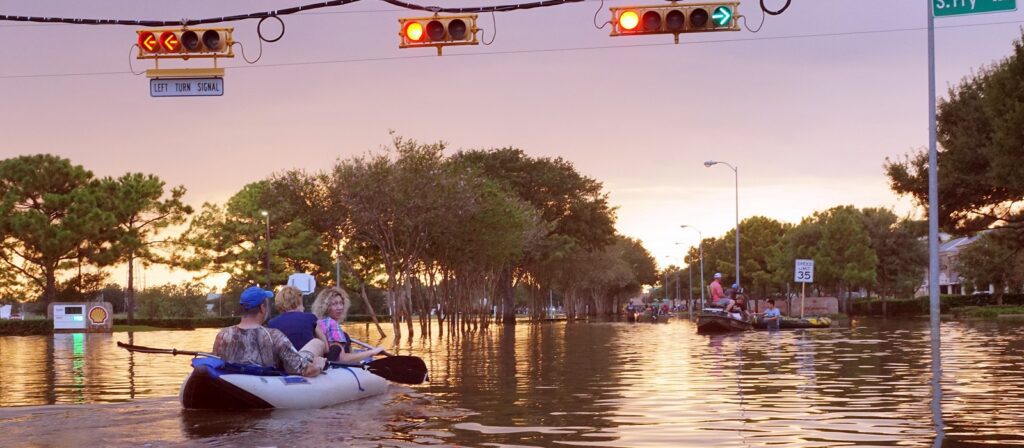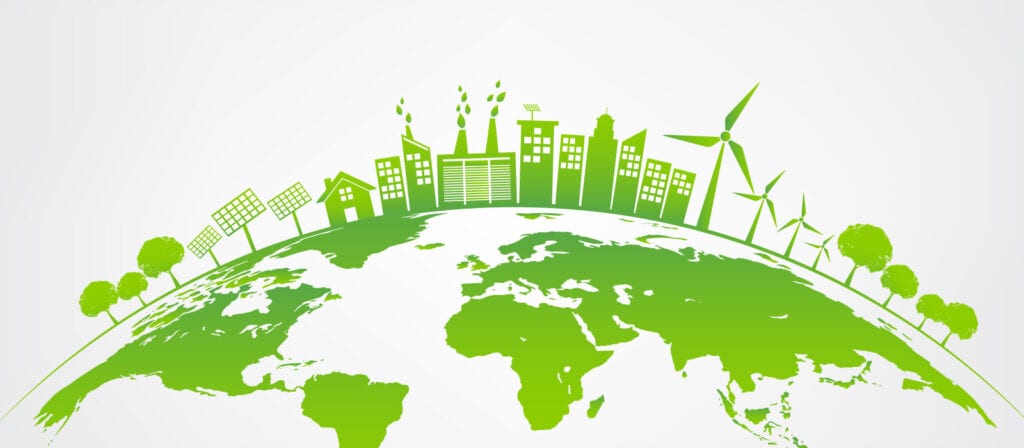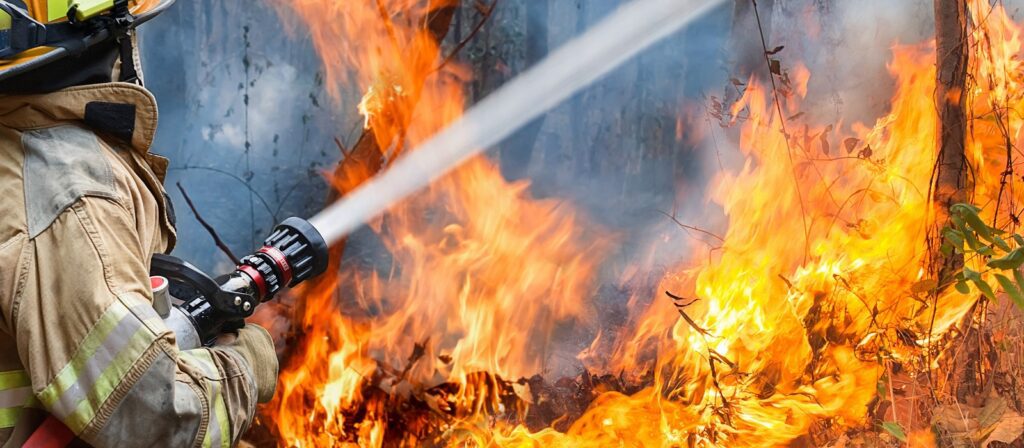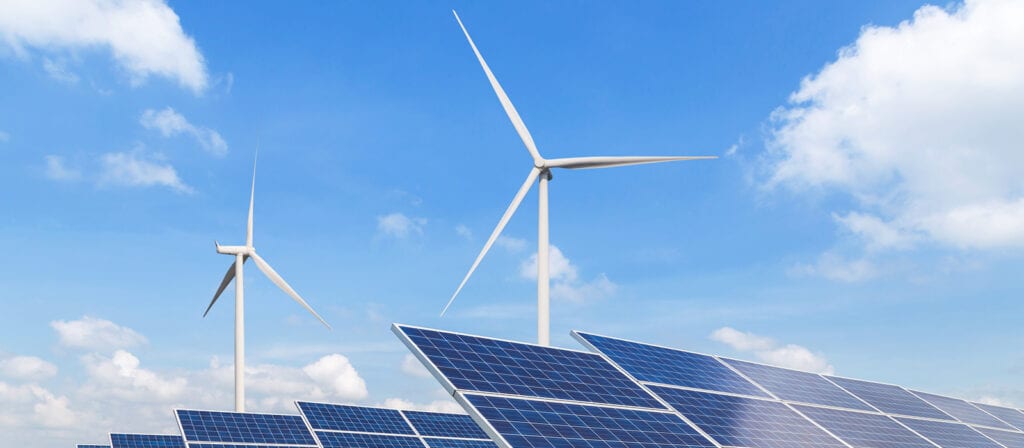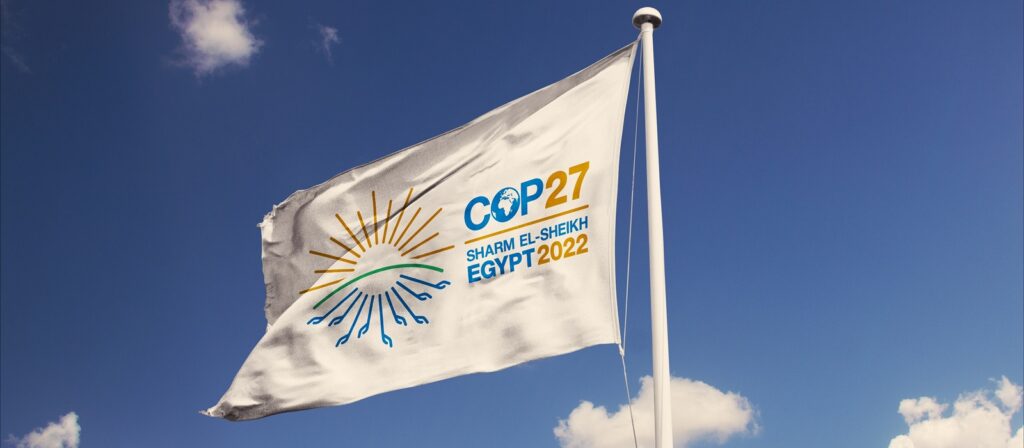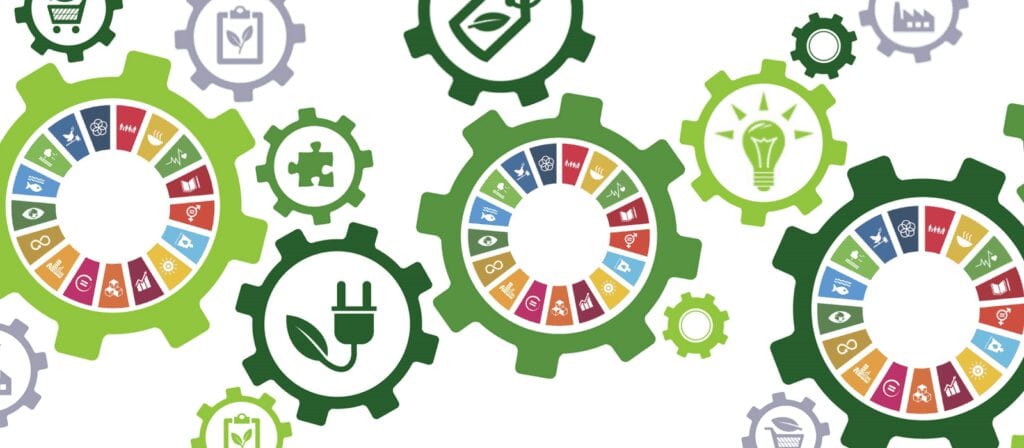Ben Telfer:
Hello everyone, and welcome to today’s ICMIF webinar: Driving the shift to a circular economy through prevention and sustainable claims management. Today, we will hear from Swedish ICMIF member, Folksam, on their journey to promote the circular economy and how this fits with their wider sustainability strategy and efforts to contribute to a more sustainable society.
I’m very pleased to introduce today’s speaker from Folksam, Sophie Hemne. Sophie is a sustainability strategist at Folksam. Sophie, thank you so much for joining us today. I’m very pleased to hand over to you.
Sophie Hemne:
Thank you, Ben, and thank you, ICMIF, for inviting us. My name is Sophie. I’m a sustainability strategist at Folksam. I work at the Department for Asset Management and Sustainability. My daily job is a lot of reporting, but I also work to support our business side with sustainability issues and integrating them.
If we start with Folksam, some of you might know Folksam and some don’t, so I thought we would start out with describing a little bit what we do and who we are. We’re Sweden’s largest insurance group. The Folksam Group is a mutual insurance group with both life and general insurance within the group. Our job is to provide security for every phase of life. And with us, customers can insure themselves, their family, and their property, and also save for their pension.
Almost half of the Swedish people in Sweden are insured by the Folksam Group. There are more than 3 million people who have their long-term pension savings at Folksam. And this makes the Folksam Group a leading player when it comes to insurance and pension savings in Sweden. Sustainability is integrated all through the business. And our vision is we want our customers to feel secure in a sustainable world.
Globally when we speak about sustainability issues, we have mapped them on how we contribute to the UN Sustainable Development Goals (SDGs). We try to contribute to all 17, but we have mapped six that are of the most importance to our business and where we think we can have the greatest impact with working with them. The Folksam Group’s size and the nature of our business gives us the ability to create the substantial positive impact and contribute to these SDGs. But it also gives us both responsibilities and opportunities. So we have identified specific targets for our sustainability work, and we have mapped our sustainability focus areas to the SDGs.
The Folksam Group’s targets are directly linked to six of the UN 17 Sustainable Development Goals. As you can see here, we’re looking at Goal 3, health; Goal 5, equality and diversity; and Goal 8, decent work and economic growth. And on the left side, we have the more environmental-themed goals that are climate action, sustainable consumption and production, and sustainable cities and communities.
Today, we’re talking foremost about sustainable consumption and production and climate action since we’re going to talk about the shift to a circular economy and environmental impacts of our business. But I thought we will look first as a little recap on the holistic view of our sustainability work. When we look at health, it’s a very important issue for us, and preventing personal injuries is the most important thing we can do as an insurance company. We have several activities going on to do that, and also corporations with sports associations both for adults and for young people to prevent both physical injury, but also increasingly psychological health.
If we look at Goal 5, equality and diversity, as a customer-owned company, we work with some of the Swedish population and our work has to reflect that reality. We have reached our goals on equality between men and women. And recently, we won a prize for most equal insurance company attributed by a Swedish polling institute, it’s called Yammix. And we also work with diversity, of course. Our goal there is to offer customer service in many languages. Currently we have 18 languages in which customers can call in and get service.
If we look at Goal 8, decent working conditions and accessibility of financial products, that’s the goal of the whole Folksam history. The Folksam Group was formed with the vision of establishing better conditions and greater security for all people. And together with our credit union partners, we’ve worked to give customer security at their workspace and also enable them to stay healthy and a complete work-life.
If we look at Goal 11, sustainable cities and communities, this is foremost our subsidiary at KPA that is working with this goal and they do it foremost through green investments, green bonds and infrastructure investments in cities.
If we’re focusing on the two goals that we’re going to talk about in depth today, they are Goal 12, responsible consumption and production, and 13, climate action. If we look at Goal 12, sustainable consumption and production, we’re working to change the industry from a claim settlement that is linear to one that is circular and sustainable. Cars, homes, holiday homes, and small goods consumptions are all elements of our insurance and are things that we handle when damage occurs. Basically we sell services, but we handle products. That’s why this goal is so important to us to be able to close the loop and also work actively through our whole value chain with our suppliers, but also our consumers to be able to make sure that it’s handled in a responsible way and resource efficient way.
Our goal is for our claims system to be fully circular, but a lot of work remains to get there. Our work with sustainable claim settlement helps to reduce waste and cut CO2 emissions, but it’s also an important way to find new ways of increasing reused and recycled materials. Equally important is that we do not use materials that are not recyclable or reusable in the first place, and that we work with our suppliers and customers to raise awareness on which materials not to use when we’re preparing a home or settling a damage.
Folksam is the first major insurance company in Sweden that has home, holiday and car insurance products that are certified with the environmental labeled Good Environmental Choice, and we have been so since 2011. So, our environmental work has been going on for a long time now. And we have been getting a third party label 10 years ago.
If we look closer on Goal 13, climate action, and they are of course fully interlinked, responsible consumption and climate action, you can’t work with one without working with the other, but we also have targets related to climate and we are working on the whole for a fossil free society or a low fossil society. And we’re counting for afford to insure ourselves if we do not stop climate change. So it’s strictly business related of course, but also with a strong emphasis on doing good.
Our size again gives us strength to reduce emissions in all areas of our business, from our own offices on travel to the influence we exert over other companies to reduce their emissions through active management and stringent purchasing requirements. The Folksam Group is one of the initiators of the UN-convened Net-Zero Asset Owner Alliance. The Alliances’ goals is for their investment portfolios to have net-zero greenhouse gas emissions by 2050. The halftime target for 2025 is a decrease by 29% of emissions, and CO2 emissions from our own operations where we have a goal to be fossil free or net-zero aligned with 2030. And that translates to a yearly decreased with 9% each year to reach our target by net-zero emissions by 2030.
Last year was, of course, an exceptional year in many circumstances, but last year we almost halved our own emissions, so they decreased by 50%, but we do foresee a slight increase when things get back to normal and the COVID pandemic is finishing. We have also last year revised the foreign equity portfolio to include fewer holdings, higher sustainability ratings on smaller carbon footprint, as well as the exclusion of oil scents.
Our sustainability work is of course based on our vision and also the fact that our consumers are our owners and that sustainability represents good business. So it’s threefold. On behalf of our customers, we had around GBP 42 billion late last year under our management. And therefore, in 2019, last year, Folksam saw an opportunity to make an important contribution globally by being one of the initiators of the UN-convened Net-Zero Asset Owner Alliance.
The Assets Owner Alliance is an international group of institutional investors committed to transitioning our entire investment portfolios to net-zero greenhouse gas emissions by 2050. And this is in alignment with the Paris Agreement with the 1.5 degree scenario. And the Allianz was launched, as many of you probably know, by the Secretary General’s Climate Action Summit in New York a little bit more a year ago.
When we look at how we look at sustainable insurance products, the environment, the climate issues are important to our customers and also to us, of course. It will become increasingly expensive to obtain insurance in the future, unless we all help to slow climate change. We are owned by our customers, as I mentioned, and we have stringent environmental requirements on our products. Sustainability is also cornerstone of our work on pricing, on damage and injury prevention, and it’s also a cornerstone in our extensive research that has been going on since the 1970s. So it all comes together in a circle where if we can manage to sustainable claim settlement and prevent damages from occurring in the first place, we can also lower premiums for our customers.
Prevention is one of the two major things that I would like to talk about today, how we work with prevention. We look at prevention as our most important sustainability work. Preventing damage and injury provides greater security for the customers, that’s the first thing, but it also requires lower resource consumption, and it also sets off lower claims expenses and lower insurance premiums. So it’s a win-win-win, and we take our knowledge… on prevention, is based on experience from our own data of injuries and damages that the Folksam Group handles on a day-to-day and ongoing basis. But it also comes from research and tests that we conduct.
Customers who take steps to prevent damage and injury will receive a discount and customers who choose safe cars, for example, with low climate impact, they do receive a 10% discount on their car insurance. So there’s a clear incentive to choose environmentally sustainable products and also work with prevention to keep those products sustainable.
Before we go on to prevention on more environmental terms, we’re going to dive into all sorts of long history of prevention through research on road safety. Because we have been… this is a very short recap of a very long history, but I hope to do it some justice because since the late 1970s, we have carried out research activities aimed at developing new knowledge to prevent damage and injuries. Our research group conducts long-term advocacy work in particular with regards to road safety and sports injuries, although it increasingly also covers environmental and health aspects.
Folksam contributes to road traffic and vehicle safety through a number of measures, many of which also have the co-Benefit of reducing carbon emissions through speed reduction incentives and identifying fuel efficient vehicles, for example. And by analyzing real world accidents from a systems approach, we can propose effective counter measures and identify various countermeasures for road users.
And then again, they’re connected to the premium reductions that are frequently used to promote the efficient safety systems. For example, by analyzing real world accidents from a system approach…undertaking car models safety ratings based on real world crushes aimed to guide consumers to pick the safest cars. Other advice that we give is based on pay as you drive car insurance, which encourages insurance holders to keep within the speed limit. Let’s say, if you exceed speed limits, you pay a higher insurance premium and if you drive within limits, you pay a lower.
We also have consumer information that is used to spread knowledge to minimize injuries. So all the consumer information that we collect, this includes conducting consumer tests, for example of child restraints on bicycle helmets, et cetera, and therefore influencing manufacturers to produce safer products on helping customers pick the safest products. So there’s a lot of research going on how to prevent personal injury, but also how to drive more safely, but also drive more climate efficiently. It usually goes hand in hand.
If we look at damage and injury prevention in practice, our work is providing support and information and advice. We do this, among other things, through digital mailings containing damage and injury prevention information and through targeted campaigns. We also have a safety inspection by Anticimex for all new home assurance customers with specific tips and advice to prevent water damage in your particular home and fire damage, for example.
We offer damage and injury prevention advice through our building service advice for customers who have recently reported a water damage. That’s an open source building service that is on our website that I will come back to later. We also have apps and advice relating to work to prevent sports injuries, for example. And one other thing is sending targeted text messages directly to consumers and customers so that if an emergency situation related to extreme weather is about to occur.
In all these studies and reports, prevention becomes actual advice to our customers. This is also strictly business related, of course. There’s the sustainability side, but it also has a big business impact on Folksam’s work because we see that the level of damage has grown worse when there is a national event occurring. The costing on average is more than twice as heavy as 30 years ago. So it has a severe business impact as well. But we collect all the advice on prevention on our website. And you can see on the picture that there are advice for different types of extreme weather. It’s in Swedish, but it’s storms, floods, fires and how to barbecue safely and more day-to-day tips.
In the little pink square, you see that you can call or Skype with Folksam advisors to get tips on how you introduce energy saving appliances in your home and how you kept your energy consumption in your home. There is also a lot of the device on the website on how to make your home climate resilient. If there should be an increase, for example, in sea levels, there’s advice there on how to make it climate resilient. For example, before the change of every season, for example a bit ahead of summer, Folksam publishes information about impacts of the damages caused by natural events during the previous year.
Also, Folksam compliments this by sending out emails to customers five to six times a year with relevant information and recommendations on how to prevent damage from natural events that are for the typical for the season. Like in Sweden, in winter, that would be heavy snowfall, for example, that would be typical, or ice coming into pipes, making them burst and creating water damage. And as we see how that affects the damage that we receive or the claims that we receive for each season, we can also package it into advice to make our customers prevent those types of natural injuries or natural disaster damage that are caused by these events. As I said, Folksam also advices customers on how to become and create climate resilient housing through information on our website.
These activities change every year, of course. Last year we did some in-depth work, the in-depth monitoring developments relating to damage caused by climate change, primarily water damage as a result of cloudbursts and rising water levels. Climate adaption advice is also published through our website.
If we dive down to one specific way that we work to prevent damage from natural events is that we send text messages to our customers and gives them advice on how to prepare and prevent damage when there’s a risk of natural events causing severe damage to the society. And so the Swedish Meteorological Institute comes up with a warning that there is storm coming in, for example, and if that’s severe enough, Folksam sends text messages to our customers and gives them advice on how to prepare for the storm coming in or excessive rains, century rains, for example, or extreme weather of any sort.
For example, Folksam has developed a model to be able to follow natural events on a regular basis, such as lightning, storms, heavy rain and floods. And when there is the risk of those natural events causing severe damage, we do some text messages and give advice on how to prevent for those. Could also be a risk of floods in relation to spring floods, for example. Communication through text messages is being complemented with press releases and information in social media in order to reach as many customers as possible.
If we do look at the second pillar of it becoming circular, it’s sustainable claims settlements that when a damage or injury does occur, how do we settle it in a sustainable, and hopefully soon circular way? Every year our suppliers repair damaged houses and cars and household goods for large sums of money. Folksam’s total expenses for building repairs, for example, amounted to over a billion Swedish kroners last year, when expenses for car repairs were almost 2.5 billion. So it is huge sums of goods and building materials and parts that are bought every year through our suppliers.
We work in four ways with this. We have a sustainability labeling which is an environmental governance system. It’s called Bra Miljöval. And we work through strategic partnerships on supplier requirements and also through capacity building of our suppliers. As a large company, we’re very well aware of that we can influence the movement towards circularity and sustainable claim settlements.
We have the opportunity to exert an influence through our stringent environmental requirements, and we have contributed to an improved environmental standard of several large subcontractors that we use. So there is a significant impact going on. And we’re going to dive into each of these, but the foremost upper three, sustainability labeling, strategic partnerships, and supplier requirements.
If we look at our sustainability or ecolabeling system, it’s called Bra Miljöval, and we want the offering to be sustainable and we also want to reward those customers who make sustainable choices. And we also want it to be easy to choose a sustainable insurance product. And therefore, this sort of labeling of these products, when you buy these products, you can easily see how they are sustainable. We therefore incorporates key sustainability aspects in our terms and conditions, and in many cases we provide, again, premium discounts to customers that take steps to prevent damage or make a sustainable choice.
So the Ecolabel insurance, we’re very proud of that insurance. We’re the first and only large company, we are two now in the Swedish market, that offer this good environmental choice certification. We’ve had it since 2011 on all our home, holiday and car insurances. And to achieve the certification, our own insurance policies have to meet a number of criteria from the Swedish Society for Nature Conservation. And a few examples are that we as a company must use… ensuring that we use environmentally friendly products, that we’ve purchased ecolabeled electricity in our offices, but it also has criteria in terms of asset management, for example, using negative and positive selection in asset management and conducting advocacy work like spreading on training, spreading the word on how to choose sustainable products.
And it also, last but not least, has stringent criteria on claim settlements, working with materials selections and eco-friendly repairs. So, that’s the basis of how we work with sustainable change settlement.
We also work with strategic partnerships for circular flows. This one is within the goods segment. Since 2015, we have been working together with GIAB in Sweden to create a circular flow for damaged objects, such as sofas, glasses, bicycles, mobile phones, computers and other electronics that are often included in the home insurance. They’ve also developed a special mobile circle for cell phones and/or customers handing their damaged phone, and in most cases receive an equivalent remanufactured or repaired phone in return. And through our corporation with GIAB, the majority of our customers’ mobile phones are reused, which we’re very proud of. And all usable parts are reused, and it can be used as a resource for other customers’ mobiles rather than becoming electronic waste.
The burden on the environment is also reduced having this corporation in form of reduced waste and lower carbon dioxide emissions. If we look at last year, we saved 3,442 tons of waste and CO2 this year too decreased. Our savings were 2,044 tons.
This is our partner, GIAB, has organized their circle for, they call it the Mobile Circle, and you have, of course, raw materials coming out from the soil at the left corner, going in to production, going on to suppliers and then ending up at the end consumer, like you and me, getting a phone. Then you have an incident occurring, which is that you dropped your phone or that it’s damaged in any way. But instead that the damaged phone goes to waste, it goes back in and gets repaired by GIAB, and then it goes out again to the end consumer, that’s you and me. If it can’t be repaired, it goes to something that is called returhurset, where you can see if some parts can be reused or repaired. So we touched two circles, two possibilities of getting a new life or prolonged product life before it becomes waste.
We have also started a strategic partnership for circular flows when it comes to water damage. Folksam is testing a new technology to reduce damage to materials when water damage occurs to get the dump out of the material and Ben Telfer, through that technology and pilot project, we could save over… It’s been going on for a year and we saw that we could save over 3,000 square meters of materials, which is the approximate equivalent of 30,000 kilograms of CO2. Another positive business effect was that the total days that it took to settle the claim was also reduced substantially. So customers were happy and their environments were affected less.
If we look at our supplier requirements, we have supplier requirements and we have approximately 200 subcontractors over the whole of Sweden. And it’s from very big entrepreneurs, such as a big Swedish construction company, to little one-man companies or one-woman companies within construction. And we do spend around 800 million in construction and repairs each year. So when we work with suppliers, Folksam suppliers should work to reduce their environmental impact, and they should inform themselves if their business is potentially negative environmental impact in terms of use of heavy metals and chemicals, but also emissions and heating and transport.
We also encourage them to apply a life cycle perspective when they evaluate the business environmental impact. And we do require them to work systematically, like having an environmental management system to reduce their negative impact. There was also supplement… There’s two types of requirements. One is package one, which is a compliance baseline of requirements that we post on our subcontractors, but there’s also a package two, which includes training and capacity building at their company to be able to deal with their negative environmental impact in a stringent matter.
Another important part of closing the loop for materials is that you don’t use toxic toxins or toxic materials in the first place. Folksam has developed a guide called byggmiljöguiden, where you can look up on our website, you can look for different types of construction material, paint, isolation, et cetera. And you can see what kind of environmental qualities they have and what toxins they include. This is a free source guide that everyone can use at their website. You can also look for specific products and there are all sorts of tests of different type of products, not just paint.
In this guide, Folksam gifts every material either a green symbol, then the material is recommended to be used by Folksam customers or subcontractors, a yellow symbol, then it’s accepted until further notice, and a red symbol, that’s material that Folksam doesn’t recommend that their customers or subcontractors use to settle a claim. That’s the way we work. That’s all of the info I have, Ben, so I would like to open up for questions or comments.
Ben Telfer:
Thank you. We do have a few questions. If anybody else in the audience has any more questions for Sophie, please do put them into the Question box and we will pose them now. Sophie, first question I have for you here, Folksam works hard to change consumers habits with sustainability in the circular economy. How do you measure this impact?
Sophie Hemne:
How we measure the impact that if consumers choose sustainably or not? It’s a very good question and it’s difficult to measure because we’ve decided to, like for the products that we do label with a sustainable holiday, home and cars, all of them has that label. So you can’t really choose anything else, actually. If you buy those products, you also get the sustainability label and the reassurance of that the product is sustainable. Say, if you buy those products, it’s a hundred percent, but there’s also, of course, other products. But we’re working, as we speak, to set targets to be able to measure all our impact on this.
Ben Telfer:
Another question about Folksam’s metrics, how do you measure the impact of your prevention and risk management activities? Do you see a tangible reduction in claims in terms of frequency and severity as a result?
Sophie Hemne:
We do not have metrics on that, unfortunately. We don’t measure that at this point. Of course there is a will to be measuring it in the future and we hope that we could do so. And maybe that’s also part of being transparent with how we work, but we could open up for corporation on that kind of metrics and comments on how you can measure prevention because that’s very difficult, but it’s nonetheless very important to actually see what effect it has.
Ben Telfer:
Thank you, Sophie. Another question that’s just come in, are there any other companies or industries that have helped influence or inspire Folksam’s approach to the circular economy?
Sophie Hemne:
Within the claim settlements, if we focus on that, it’s close to the building industry and there’s cooperation going on with the building and construction industry. There are also, an industry have come very far in certain sustainability issues, but if, for example, the reuse of products has been a bit slow. So, that has influenced our work substantially. That’s an industry that have influenced the work. I hope that answers the question for them.
Ben Telfer:
I think they just wanted to know if there’s any other organizations out there that are leading the way in terms of promoting the circular economy or whether there’s any industries… I mean, personally, the one that stands out for me is Patagonia, the clothing company. I guess the question is asking if you research their model and whether it has inspired anything in your journey?
Sophie Hemne:
Yes, we do look at other companies. We analyze how other companies work and other industries, of course, and for it to get inspired, a good example is on best practices, when it comes to the circular economy, we do look for inspiration in, for example, the retail business, a company such as H&M and IKEA who have been able to focus on products that close the loop. And so that’s, I guess, industries where we look for inspiration on the retail industry. I think they have come very far. The car industry is also very good in reusing parts, actually. So we work with them and look in their direction for inspiration as well.
Ben Telfer:
Thank you, Sophie. Another question here, long-term, do you see a shift in Folksam from providing insurance to just providing advice and services for prevention and risk reduction?
Sophie Hemne:
Possibly. There are certain trends going that way, but I can’t see that happening anytime soon, but then that’s something that we do follow as well, of course.
Ben Telfer:
Yes. We may be talking 10 years, 20 years down the line, but a complete change on that insurance business model based around prevention and risk reduction as well.
Sophie Hemne:
Yeah. There’s a lot of exciting things going on in the insurance business on how it will develop and also the whole lending and borrowing economy and sharing economy will, of course, have an impacts on all businesses, including Folksam, but I’m uncertain of how that will look as we speak now today.
Ben Telfer:
Another question that just come in, Sophie, that’s quite related to that, as Folksam is a mutual company, and I know your customers are also your owners, do you find that easier in terms of influencing their habits and promoting the circular economy?
Sophie Hemne:
Of course they have an interest in the company since they own part of it, but I’m not sure if it makes it easier, to be honest. That’s not a very good answer, but it’s all I can give you now. But if I get the question, I can take it home with me as well too, have some of my colleagues working more with the mutual aspects of our company, and ask them to answer it in a more…
Ben Telfer:
I guess the question almost means that would a policyholder of a stock insurance company who isn’t an owner of the company, would they feel differently about the sustainable claims settlement process and getting recycled materials as opposed to, say new material? I guess that’s what the question alludes to.
Sophie Hemne:
Yes, possibly, but I think it has to do a lot with what offerings that you propose and what choices you give, but I can’t be more specific about that, unfortunately.
Ben Telfer:
No problem. Thank you so much. I think we’ve got time for one more question. How do you encourage suppliers to apply a lifecycle perspective and consider the environmental perspective?
Sophie Hemne:
It’s done in two ways, basically; it’s through their requirement package and it’s also tied to the environmental label where we have to inform and encourage them to apply life cycle perspective. But we also try to build capacity as to what that is because that’s a very complicated way of looking at every material. And it demands enormous resources as well for our suppliers and some of them are very small. And so we do encourage that, but it’s not the firm requirement.
Ben Telfer:
Thank you very much, Sophie. I will close out the webinar there. Sophie, thank you very much for your excellent presentation and for the engaging discussion. Anybody in the audience or watching this recording, if you do have any follow-up questions for Sophie, please do get in touch. Sophie and Folksam are obviously very happy to share more they’re doing on this topic. Also, as well, if you are interested in a couple of initiatives that Sophie mentioned before, Folksam obviously, their transition to net-zero, and also how they’re investing in green bonds, we’ve hosted two webinars last year on this topic. You can access them via the Knowledge Hub or via the link on screen (icmif.org/icmif-webinars).
Goodbye. Thank you everyone.
The above text has been produced by machine transcription from the webinar recording. ICMIF has made every effort to ensure that transcriptions are as accurate as possible, however, in some cases some text may be incomplete or inaccurate due to inaudible passages or transcription errors. Listening to or watching the webinar recording will allow you to hear the full text as delivered during the webinar but this is available in English only. Our transcriptions are provided to enable members to select the language of their choosing using the dropdown menu above.
